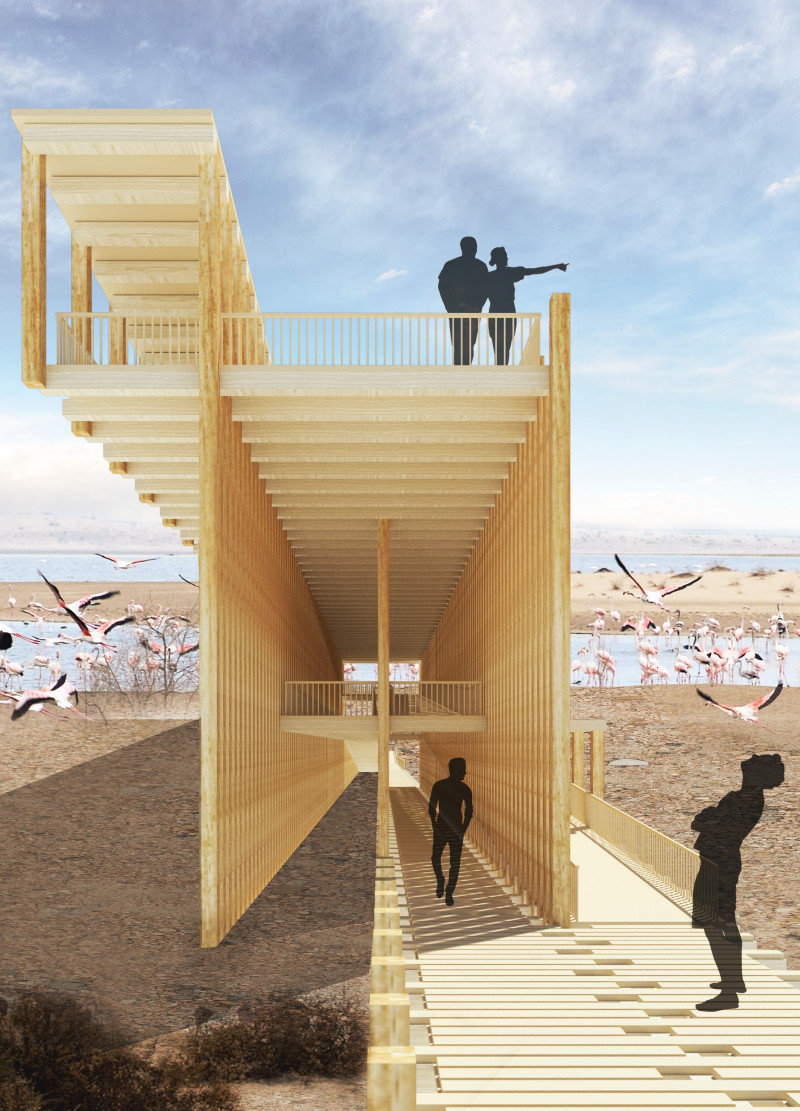5 key facts about this project
The Abu Dhabi Flamingo Observation Tower stands within the Al Wathba Wetland Reserve, serving as a viewpoint for visitors to observe the local ecosystem. The design takes cues from the anatomy and movements of flamingos, underlining themes of balance and stability. The concept highlights the relationship between the structure and its natural surroundings, creating an engaging experience for those who visit.
Conceptual Framework
The design draws inspiration from the spine of a flamingo, which acts as the core of the tower. This connection illustrates how the bird maintains balance while standing on one leg, providing insight into the structural choices made in the tower's design. The form of the tower captures this dynamic, creating a visual representation of the flamingo’s ability to adapt and remain steady.
Structural Dynamics
Flanking the main structure, two ramps represent the wings of the flamingo. These ramps encourage movement and offer pathways for visitors to reach the observation deck. The design ensures that the journey through the tower is fluid, allowing individuals to ascend gracefully. At the top, visitors are rewarded with broad views of the wetlands and the vibrant population of flamingos.
Material Considerations
The observation tower employs lightweight timber modules to enhance its performance while reducing its impact on the environment. These materials allow the structure to adapt to seasonal temperature changes. The use of timber aids in limiting heat absorption during hot months, ensuring that the tower remains comfortable for visitors.
Spatial Integration
The tower rises from the landscape, establishing a connection with the surrounding wetlands. This integration allows visitors to feel closely linked to the environment. By positioning the observation area at an elevated level, individuals can take in the diverse wildlife around them. The design encourages a respectful appreciation of nature, as it highlights the beauty and importance of the wetlands.
The observation deck gives clear views of the scenes below, providing an opportunity for visitors to immerse themselves in the lively ecosystem and appreciate the flamingos in their natural habitat.






































